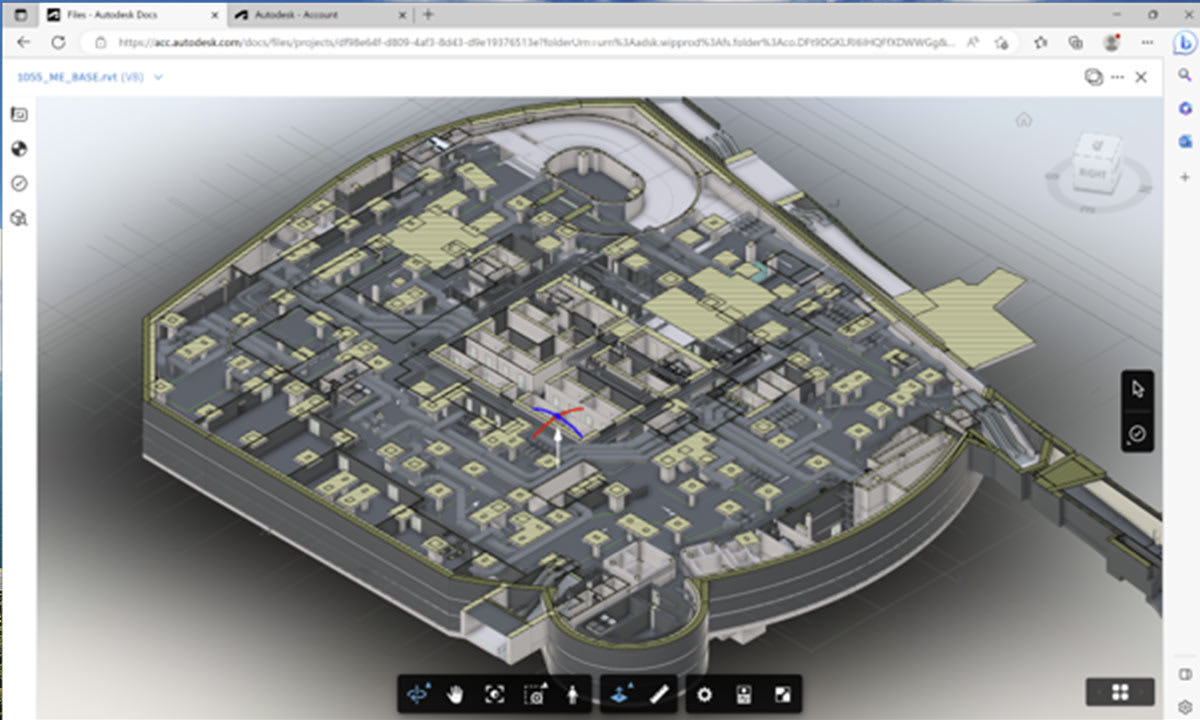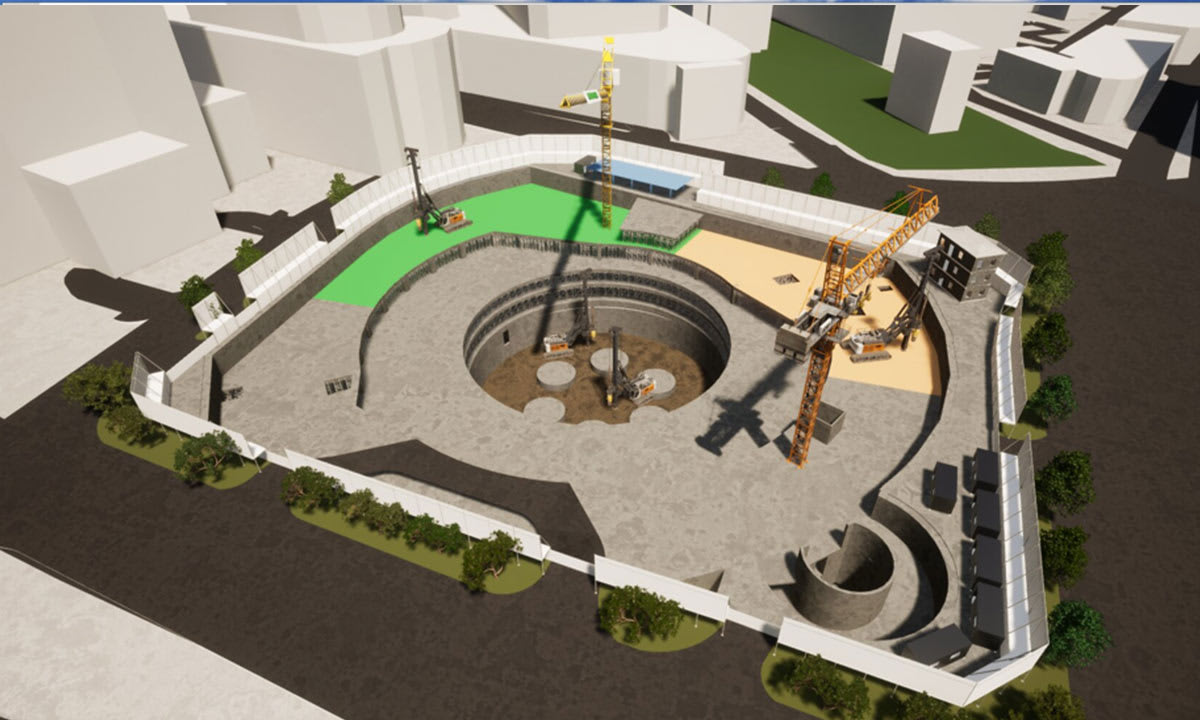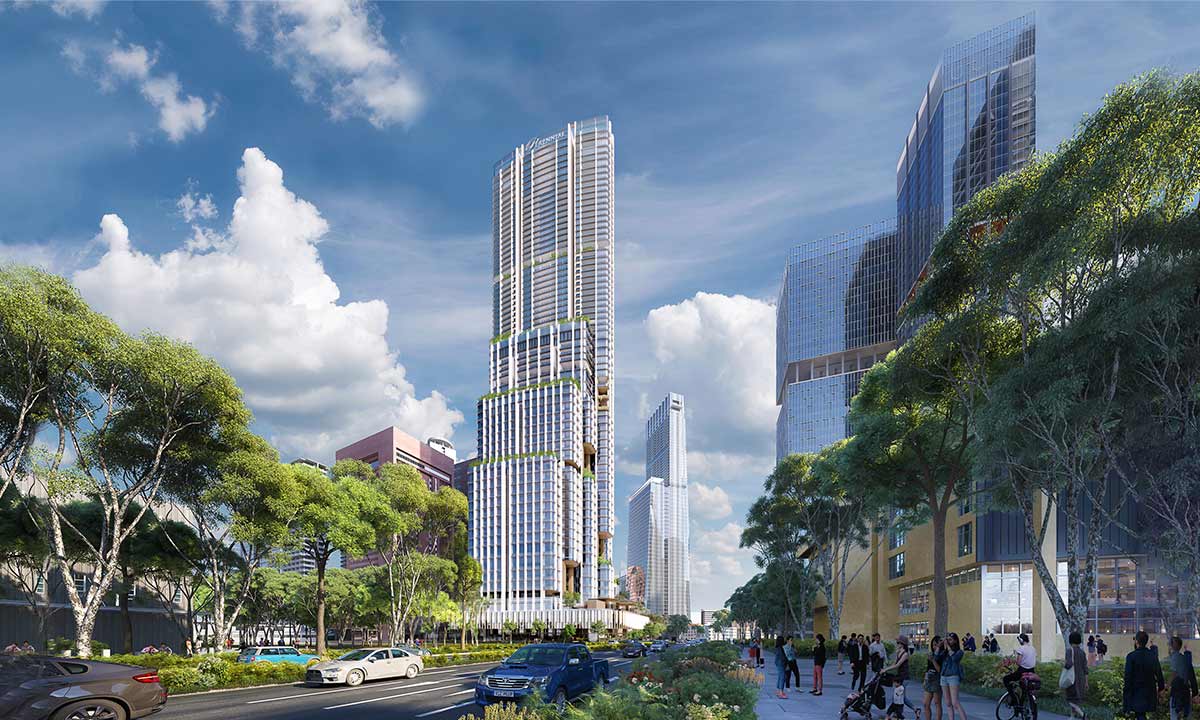China Harbour improves efficiency by 70% with Autodesk Construction Cloud
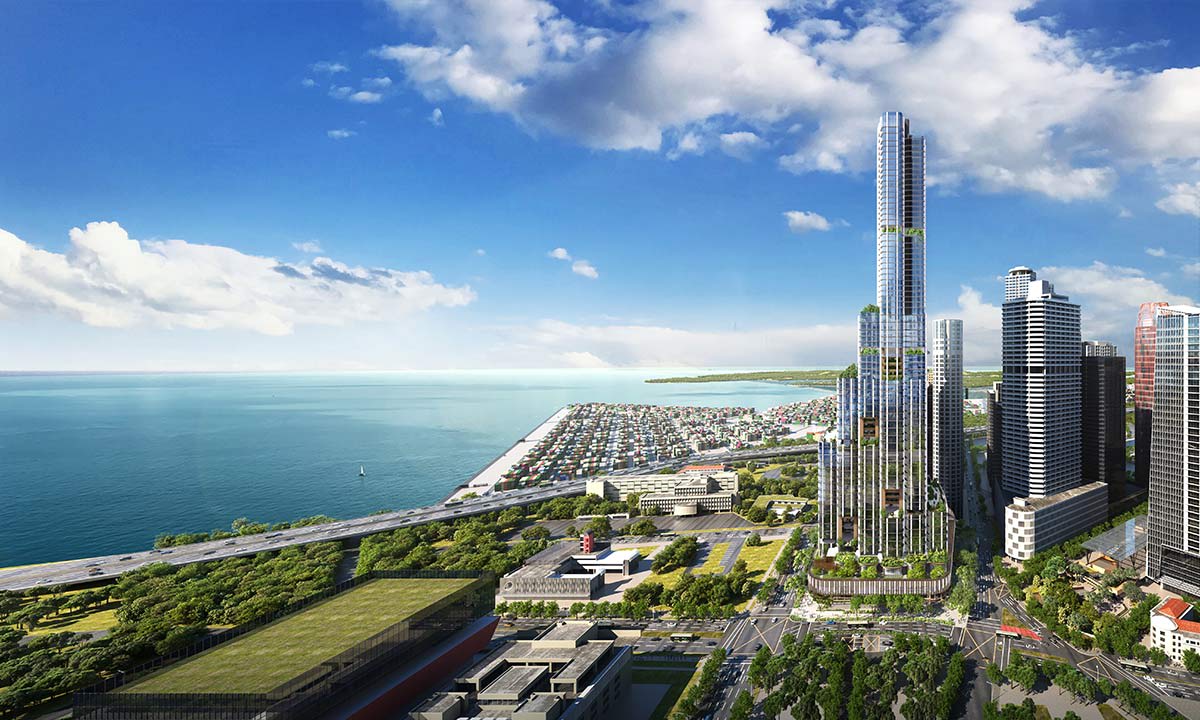

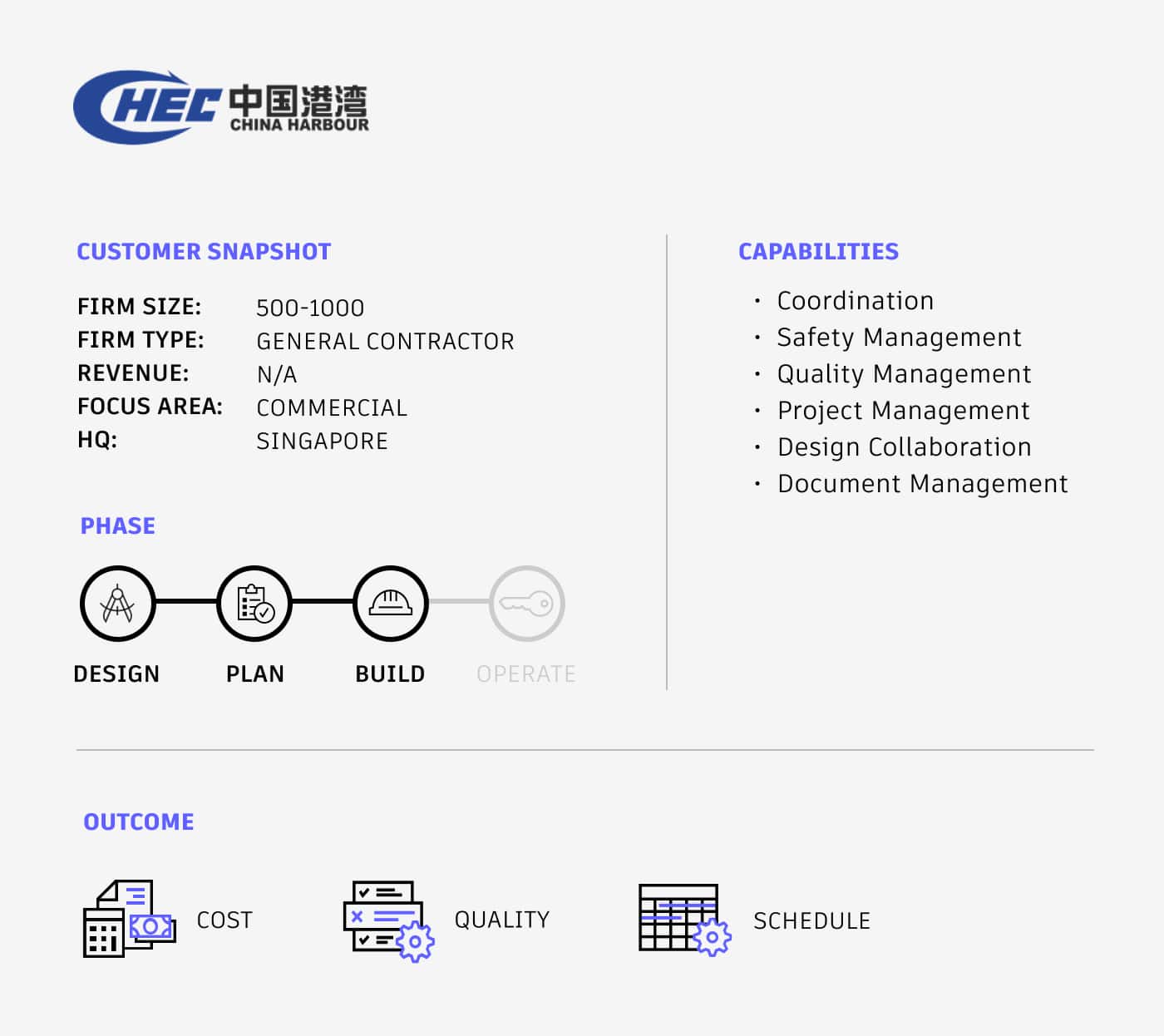
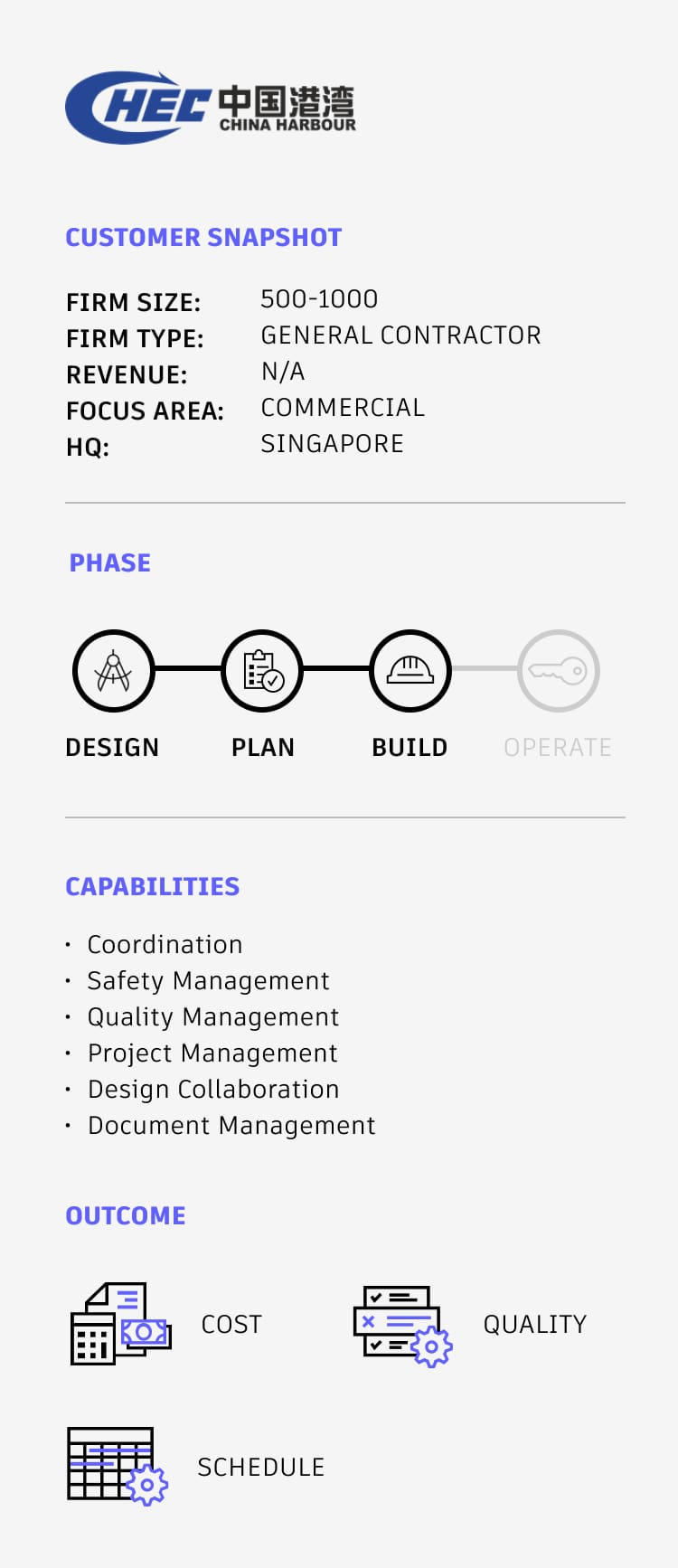
China Harbour Engineering Company Ltd Singapore Branch is principally known as an infrastructure and marine engineering company. But the company is making its mark on the city skyline in the most impressive way possible.
The new tower at 8 Shenton Way will be the tallest building in the country at 305 metres.
Located in Singapore’s Central Business District near Marina Bay, the structure will feature public spaces, offices, retail, a hotel, and private residences.
“This project is monumental for our team,” says Allen Datu, Corporate BIM Manager.
With a project of this size, seamless collaboration between stakeholders is vital. To manage the communication between designers, engineers, consultants, contractors and the client, Allen and China Harbour are implementing Autodesk Construction Cloud for the first time.
Seamless collaboration at scale
The 8 Shenton Way project is a design-build contract, with China Harbour providing feedback on constructability during the planning stages. To help teams seamlessly collaborate, China Harbour needed a solution to manage host both design and construction data, without needing to jump between different platforms.
In addition, the project client wanted China Harbour to use a single digital platform for the entire design-build timeline. An extra stipulation mandated that the site team must always be able to access the latest drawings and coordinated models.
“For this project we were able to make our own proposal for the platform we would use,” said Allen. “We use Revit as our authoring software, and of course the integration with Autodesk Construction Cloud was seamless.”
Realising incremental gains
Even though the 8 Shenton Way project is in the early stages of construction, with the pouring of the concrete slabs beginning in early 2024, Allen says the benefits of a cloud-based system are already becoming evident.
“Modelling, and the sharing of those models, has been made so much easier with a cloud-based platform,” says Allen.
And while some of the improvements may seem small at first glance, Allen emphasises that the accumulation of incremental optimisations has led to a huge overall effect on efficiency.
Model coordination
Without cloud-based sharing from a single source of truth, collaboration would involve the repeated uploading and downloading of large files, which then need to be combined into one master container model. That process, Allen says, could take a whole day.
“But for this project, everything is happening in real time for everyone – subcontractors, consultants, everyone,” he adds.
In fact, Allen estimates that “there is an improvement [in efficiency] of more than 70% in the BIM workflow, just because the exchange of data is so much faster,” thanks to Autodesk Construction Cloud – saving several hours each time.
Clash detection
In the past, clashes would be detected only when various subcontractors’ models were combined. But not with Autodesk Construction Cloud – it’s a simple case of syncing files, which is happening all the time. Allen estimates that China Harbour saves 6–8 hours each month on clash detection work.
Cloud-based models are never out of date, with clashes detected in real time. And because every stakeholder is working on the same shared model, fewer clashes happen in the first place.
“There are a lot of eyes looking at the model, and a lot of people checking and commenting at the same time,” says Allen, “so with Autodesk Construction Cloud there are fewer mistakes.”
Stakeholder collaboration
Autodesk Construction Cloud has significantly improved communication between China Harbour, its subcontractors, and the client.
The platform has been especially helpful in the bi-weekly Integrated Concurrent Engineering (ICE) meetings, where the project stakeholders discuss design issues.
“When we’re reviewing the data from Autodesk Construction Cloud as a group, we can talk about anything that could hinder the construction team in doing their job,” he says.
Every stakeholder, including China Harbour, can meet with confidence knowing that they are all working on the very latest version of the project files.
Any changes made in the ICE meetings are immediately reflected in the shared model, meaning every stakeholder – even those not in the meeting – can see them immediately. And because decisions can be made more quickly, plans can be created and signed months ahead of casting, instead of just in the nick of time.
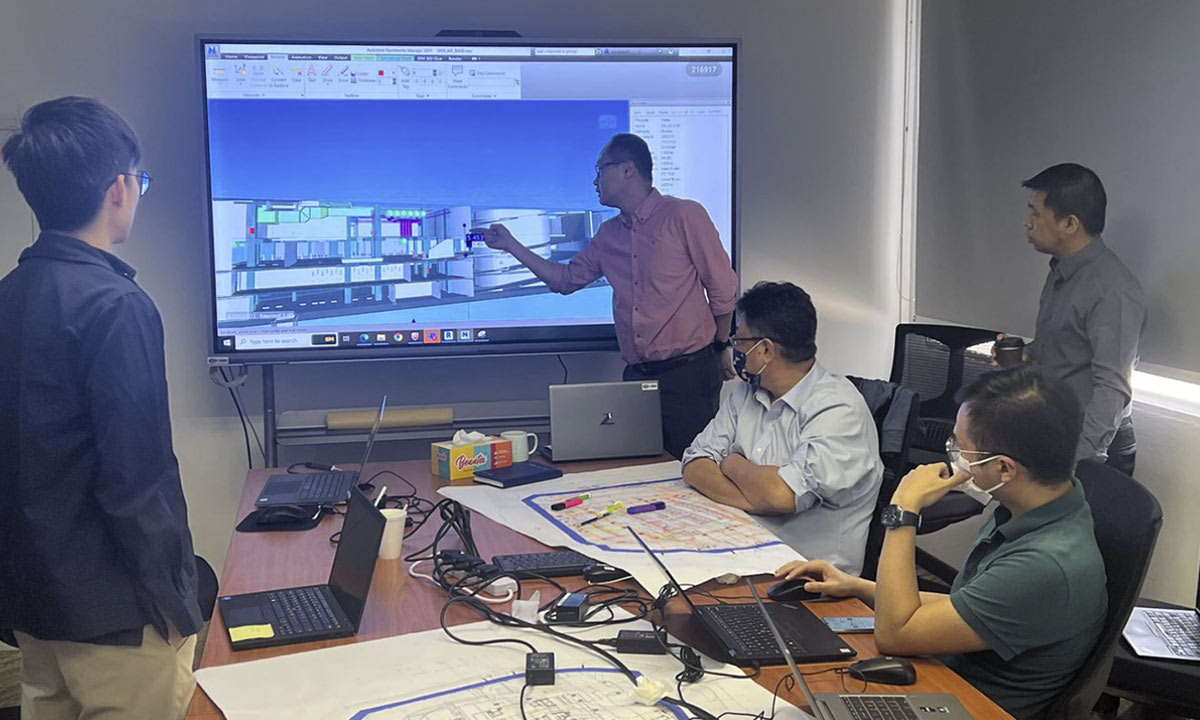
RFAs and RFIs
For RFAs and RFIs, using Autodesk Construction Cloud has allowed China Harbour to keep track of processes much more efficiently – the Document Controller can automatically generate reports with just a few clicks, instead of hours of manual processes. Allen estimates that using Autodesk Construction Cloud for these processes has created a boost to efficiency of around 20–30%.
Filling out forms has also been made easier, says Allen. “Previously, we would have to print out the form, find a manager to sign it, then scan it and send it by email. Now, we have all the templates ready, and we can just click ‘send’ – it takes about five minutes to complete the whole process.”
A towering success
On projects the size and scope of 8 Shenton Way, the accumulation of small incremental benefits can have huge ramifications.
By significantly reducing the manual work involved in model consolidation, clash detection, and RFI/RFA processes, China Harbour has made huge improvements in efficiency that will continue to compound over the life of the project.
And shared models, updated in real time, have allowed better data-driven decision making by all stakeholders, delivering tangible results even at the earliest stage of the build.
8 Shenton Way, Singapore’s first ever ‘supertall’ building, is due to complete in 2028. China Harbour is looking forward to continued success with Autodesk Construction Cloud as the iconic building continues to take shape.
